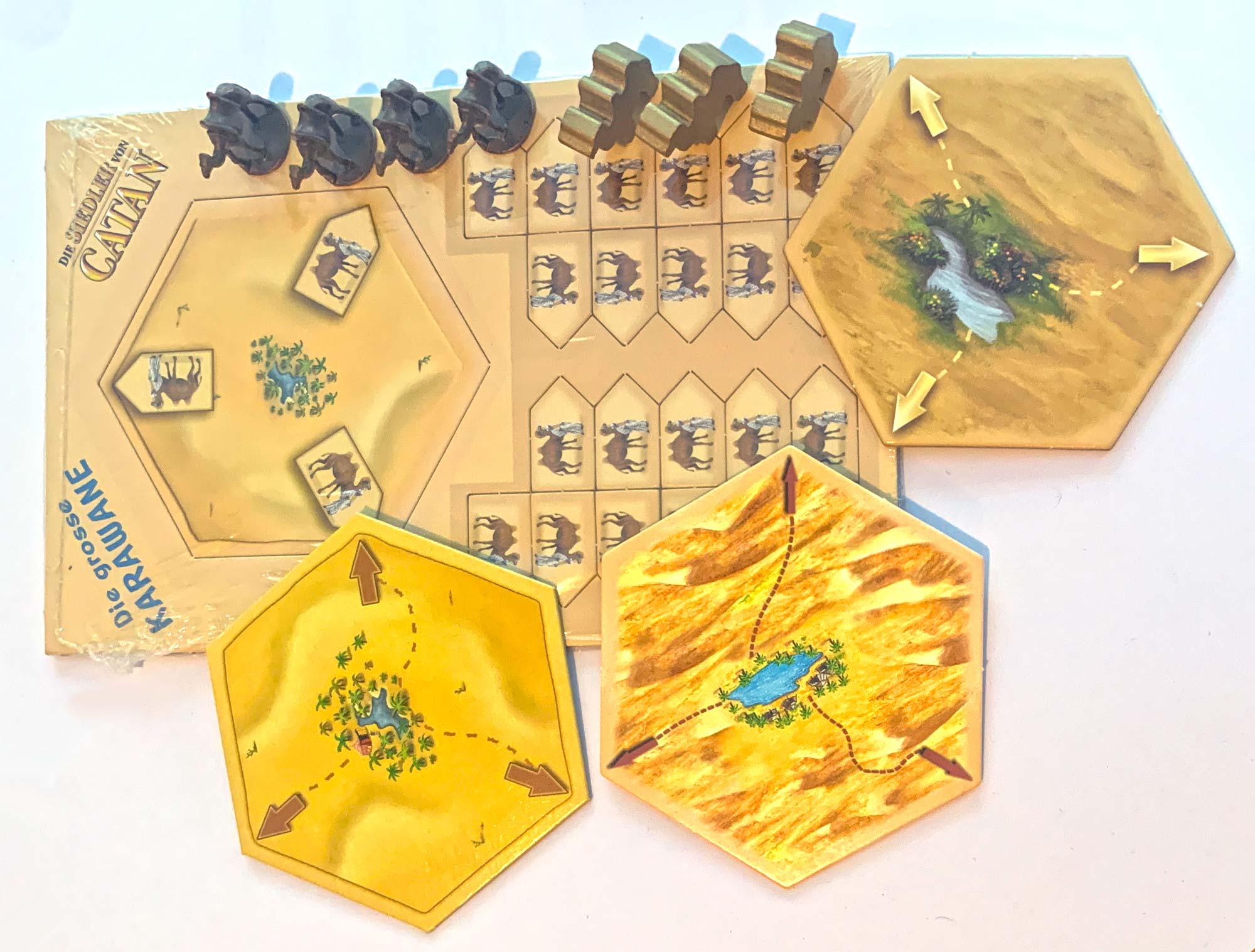Die Große Karawane (The Great Caravan)
Nomads from the desert offer commodities in exchange for wool and grain
The Story
Nomads established themselves in the oasis. The nomads desperately need wool and grain, and offer
commodities of the desert in exchange for them. Since the Cataners always have a few sheep and grain
sheaves left over, the nomads send caravans out, in order to trade for the desired raw materials.
Through the course of the game, three caravan routes are formed with the caravan arrows. All settlements
and cities on the caravan route count for one more victory point. Any road running alongside the caravan's
route counts double for the trade route.
Pieces Needed
- 1 x Great Caravan hex
- 22 x Camels or Camel Tiles
Designed for the base game, but playable with C&K too. The original giveaway came with camel tokens. The scenario was later included in Traders and Barbarians and came with wooden or plastic camels depending on the language.

Instructions/Rules
The Original Rules from the giveaway version
Preparation
Replace desert hex with oasis hex. Place oasis hex in the center of the board. The oasis hex shows arrows pointing to the starting points of caravan routes symbolized by the arrow markers.
Placing arrows
Arrows are placed on the edges of the hexes (like roads). They have to be placed at the end of previously placed arrow markers or at the end of the arrows on the oasis hex. This way there will be exactly three caravan routes during the game, except you join twi routes. Then there will be less, as you may not place more than one arrow on each edge. If all the 22 arrows are used, all routes are finished and you play on as usual.
Important: The first arrow of a route (not counting that on the oasis hex) may not be placed on the edge of the oasis hex. If you turn a route back to the oasis hex, you then are allowed to place an arrow on its edge. Only the first ones may not be placed there.
When place arrows?
Whenever a player has either built settlements or cities during his turn, at the end of it, there will be a bidding starting with this player. Every player plays as many wool and grain cards as he wishes to. Then the players decide together, where to place an arrow. Each player has therefore as many votes as he played wool or grain cards. If there is a tie, the player who has alone the most votes decides, where to place the arrow. If there is no player having alone the majority of votes, the current player decides.
All played resource cards return to the bank.
Important: There is only one bidding turn. You may not add cards to your bid later on.
What are the routes for?
All roads on edges containing an arrow count as two roads for longest trade route. This way you can get the 2 extra vp card for longest road by having only 3 roads instead of 5 if two of them are placed on edges with arrows, for example. Furthermore, settlements and cities placed between two arrows count an additional vp. Game ends with a player having 12
Credits
Copyright: 2006: Catan GmbH



Index of Scenarios
These resources and maps have been gathered from various locations, including the old Catan Maps website. We do not own any of the material and we do not hold the copyright for its use. "The Lost Maps" project is about Catan fans sharing royalty free resources in a not for profit sharing process. For this reason we expressly forbid the commercial use of any resources or data on this site without permission from the original copyright holders. We welcome any feedback, suggestions or corrections.

